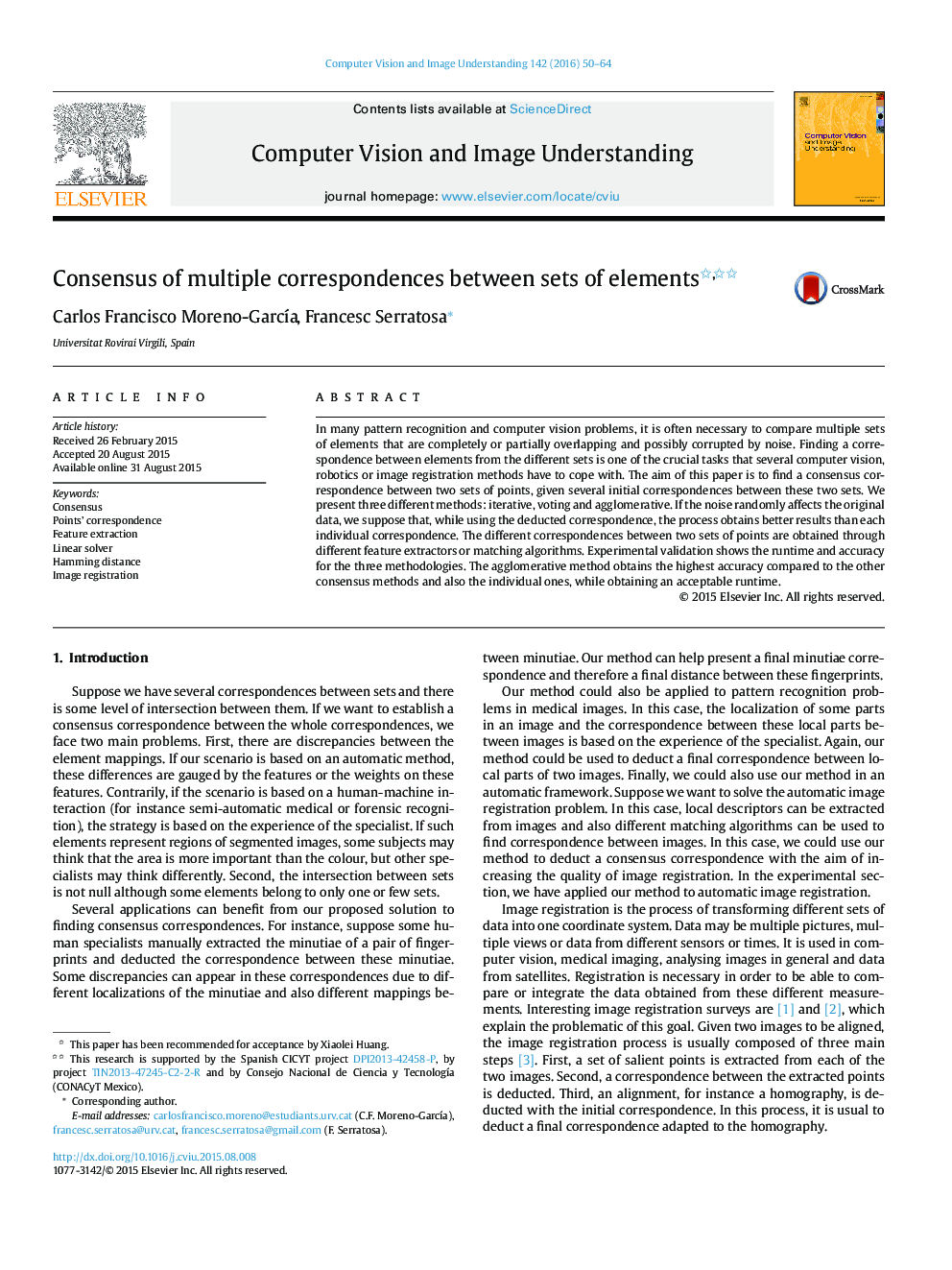| Article ID | Journal | Published Year | Pages | File Type |
|---|---|---|---|---|
| 525549 | Computer Vision and Image Understanding | 2016 | 15 Pages |
•A method to deduct a consensus correspondence given some correspondences.•We explain in detail 3 methods: Voting, Iterative and Agglomerative.•A complete evaluation on known datasets.
In many pattern recognition and computer vision problems, it is often necessary to compare multiple sets of elements that are completely or partially overlapping and possibly corrupted by noise. Finding a correspondence between elements from the different sets is one of the crucial tasks that several computer vision, robotics or image registration methods have to cope with. The aim of this paper is to find a consensus correspondence between two sets of points, given several initial correspondences between these two sets. We present three different methods: iterative, voting and agglomerative. If the noise randomly affects the original data, we suppose that, while using the deducted correspondence, the process obtains better results than each individual correspondence. The different correspondences between two sets of points are obtained through different feature extractors or matching algorithms. Experimental validation shows the runtime and accuracy for the three methodologies. The agglomerative method obtains the highest accuracy compared to the other consensus methods and also the individual ones, while obtaining an acceptable runtime.
